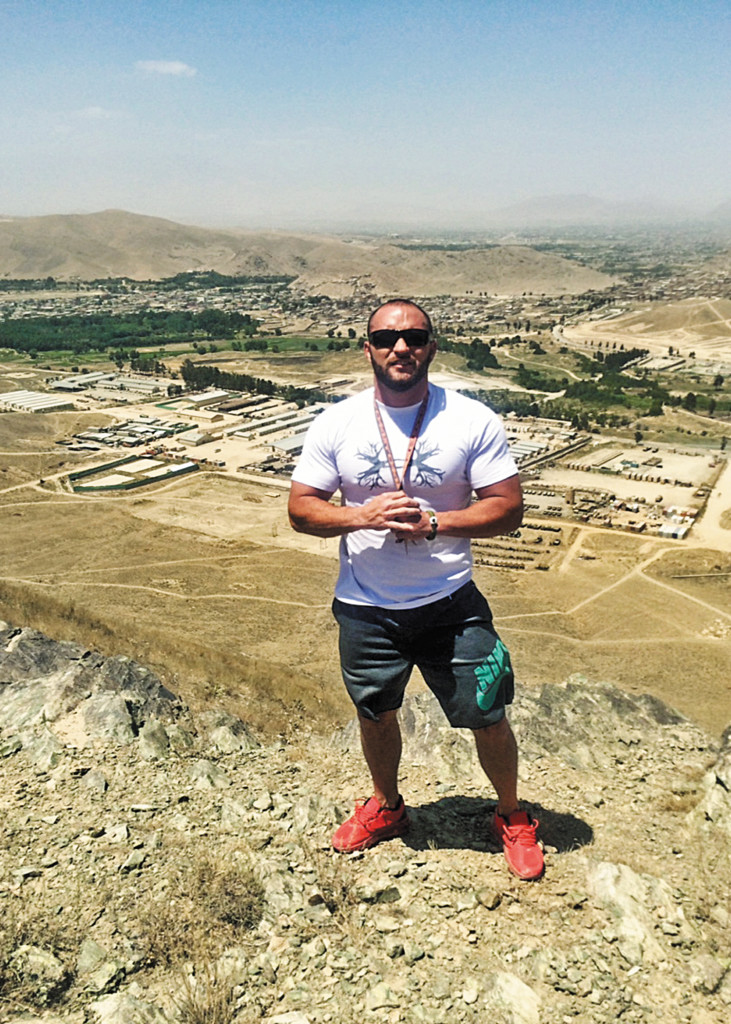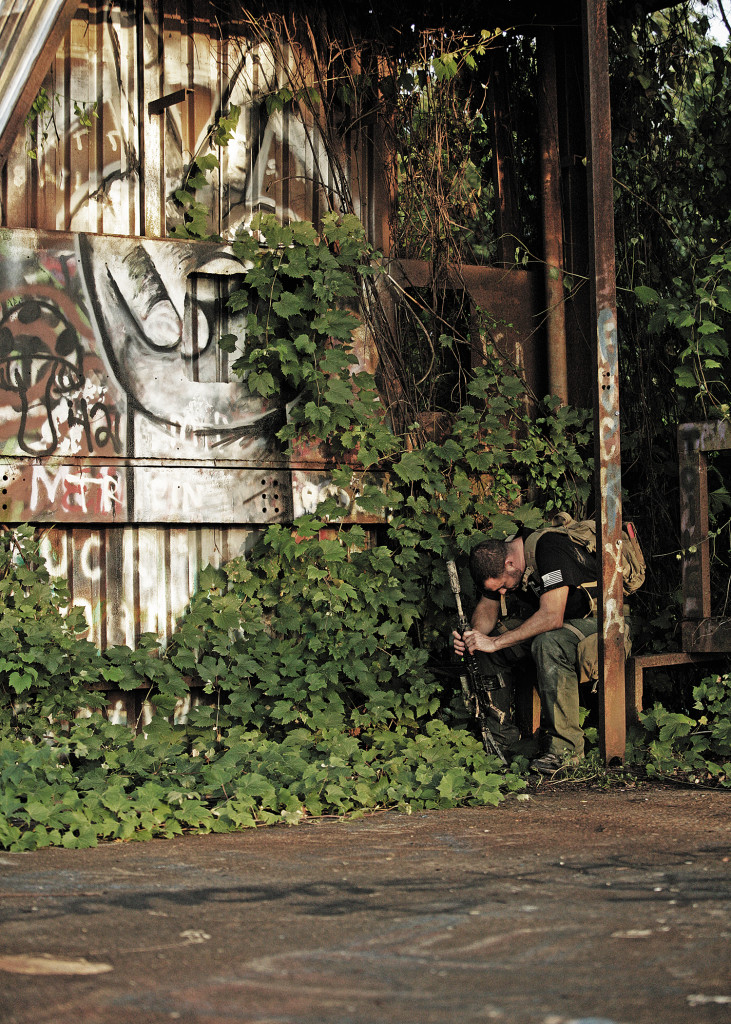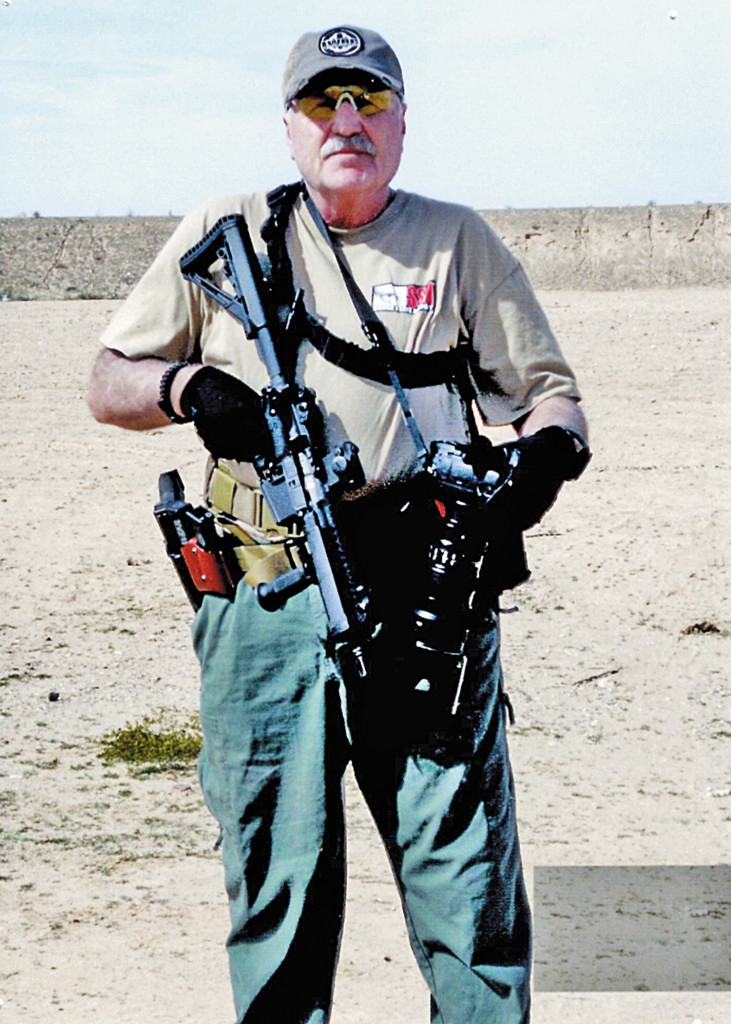In This Article
Eddie Rickenbacker is most noted for his exploits as a World War I pilot, achieving the title of Ace of Aces with 26 confirmed kills. He was awarded the Medal of Honor, seven Distinguished Service Crosses, and the World War I Victory Medal, among many other accolades. A true American badass if ever there was one.
Although most military history buffs may be aware of his record in the First World War, Rickenbacker actually escaped an early demise numerous times as a precocious kid, race car driver, and airline owner. One of Rickenbacker's most famous near-death experiences happened after he returned to civilian life. In October 1942, then head of Eastern Air Lines, but still a celebrity of sorts, he was asked to participate in a tour of bases in the South Pacific. He and seven U.S. Army airmen were provided an older B-17 as transportation, but when the bomber flew off course and their fuel ran out, they were forced to ditch in the central Pacific Ocean. They were hundreds of miles off course, dangerously close to Japanese-held islands, and drifted in life rafts while sharks circled for weeks.
Rickenbacker naturally assumed a leadership role. He captured a seagull that had landed on his head, helped divvy it up as food, and used parts of the bird as fishing bait. When the men would lose hope, Rickenbacker encouraged and pushed the men to get mad. After 24 days adrift, they were spotted by a U.S. Navy patrol aircraft and rescued.

An analysis of this particular Rickenbacker event shows that, at various times during his long-term survival situation, he utilized all of what I consider to be the “Seven Keys to Survivor Mentality” at least once and a few every day. He probably never consciously thought, Now is the perfect time to use Key Four. His survivor mindset was so fine-tuned that conscious intent was not needed. But how about for the rest of us? Follow along as I explain the seven concepts, how they've been used historically, and how you can start developing them in your everyday life.

An important method to building your own survivor mentality is researching historical examples of iron-willed...
While all seven keys are important, possibly the most important resource can be found in the historical accounts of those who have survived harrowing ordeals. Let this article be the trigger for an exploration into the history of the trials and tribulations of people who overcame incomprehensible odds and persevered.
By using Internet search engines (or better yet, that old-school archive called a public library), you have the greatest window to view the history of men and women whose stories are truly inspirational. You will begin the process of imprinting and awakening your survivor mindset by consuming nonfiction books and documentaries of adventurers, military heroes, and ordinary people who have reached deep into their inner core to find their survival instinct.
“Those who cannot remember the past are condemned to repeat it. ” — George Santayana
While one's mental state is often the deciding factor in whether one survives a life-threatening situation, there's no denying that one's physical state is a huge part of the survival equation. If you're fit and capable of overcoming external obstacles, there's a good chance your mind will push to overcome internal obstacles, too. After all, when all is lost, the only tools you'll have left are the ones you were born with.
One extraordinary example of this occurred in March 1943. A team of four expatriate Norwegian commandos, including Jan Baalsrud, sailed from England to organize and supply the Norwegian resistance. Betrayed shortly after landing, the team was ambushed by the Nazis, leaving Baalsrud as the lone survivor. He was poorly clothed, one foot was entirely bare, part of his big toe was shot off, and he was relentlessly pursued by the Nazis. He survived an avalanche, suffered from frostbite and snow blindness, but made his way over the Norwegian mountains and tundra to a small Arctic village. He had three great assets: his determination to return home, years of physical conditioning, and his training as a commando.
Here's a more modern example: As a security contractor, Robert Zugg is stationed in one of the world's most dangerous places: Afghanistan. He always makes physical conditioning a priority when he's not working for the U.S. government in the area around Kabul. With suicide bombings, anti-American sentiment, attacks by all sorts of warring factions, brutal winters and scorching summers, and just the general hazards of living in that region, Zugg learned from his combat experience as a decorated U.S. Marine that preserving in the face of adversity is a lot easier if you can walk up a flight of stairs without huffing and puffing.

Robert Zugg takes a break from trail-running in Afghanistan, where he needs to stay fit to maintain not just a strong...
Fitness competency is the physical engine that helps survivor mentality become a reality. If you're lost in the woods, facing a trio of street thugs, or swimming through a flooded street, it's a little too late to begin an exercise program.
There's a saying in gymnastics that the body follows the head. In the psychology of self-preservation, if you say something repeatedly, the brain will do everything in its power to make the repeated mantra occur. Therefore, repeating the phrase, “I am a survivor,” is one of the most effective techniques for success.
If, in the final mile of a marathon (26.2 miles), a runner repeatedly thinks, I'm too tired. I'll never make the finish line, his brain interprets this statement as a command and begins the process of slowing the biochemical reserves needed to provide energy for the final 1,760 yards. This is an example of negative-outcome thinking. Repeat something often enough and the brain will make it reality. There's a reason why having a positive mental attitude is preached ad nauseam in every survival book, scout manual, survival video, and military SERE (survival, evasion, resistance, and escape) class.
Aside from thinking positively, another fuel that propels survivor mindset is motivation. What would motivate you to stay alive in a life-and-death situation? For Steve Callahan, it was family.
On the night of January 29, 1982, the sailor and naval architect headed from the Canary Islands to the Caribbean alone in a small boat. On February 5, his craft sank in a storm, leaving Callahan adrift in the Atlantic in a 5 and 1/2-foot inflatable rubber raft with only 3 pounds of food, a few pieces of gear, and 8 pints of water. Callahan drifted for 76 days on the ocean before he reached the Bahamas. Throughout his ordeal, he never gave up thinking about the people who needed him.
What motivates a person to stay alive when everything has gone wrong? Many survival stories speak of the survivors' faith, which provides them with hope. Other survivors have told of their intense desires to get back to family, friends, and loved ones. The motivators for each individual will be different. So, if you were in Callahan's wet boots, what would motivate you to live on?
It's important to think positively and have a mantra to rely on. But those two strategies might be difficult if you don't first eliminate two common emotional traps:

Freezing up or having feelings of “Why me?” after a traumatic incident can weaken your survivor mentality.
1. Mental Paralysis: Here's a really simple formula to explain why this emotional trap needs to be eliminated:
Anxiety > Panic > Mental Paralysis > Failure to Survive
The essence of anxiety is inaction, and when the anxiety levels increase to panic, several consequences occur:
How do you reduce anxiety and stay calm? Especially in a dire circumstance? The answer to that could be enough to fill a whole other article. [Editor's note: See the “Evolution of Mindset” feature in Issue 15 of our sister publication RECOIL.] But without professional consultation, one of the best resources would be reputable websites on the Internet and, in particular, videos. A quick Google search for videos to reduce anxiety produced 2,180,000 hits in less than a minute.
Learning to control anxiety and panic reactions is a skill that can and should be used in everyday life — but, again, finding yourself in a life-threatening situation is not the time to begin practicing those skills.
2. Victim Mentality: A victim mentality might be one of the initial reactions to traumatic situations that involve prolonged periods of survival. Unfortunately, if left untreated, this will infect motivation, perseverance, and hope. It could manifest itself through dysfunctional thoughts and verbalizations. Victim mentality could show up as a verbal criticism of others, unwillingness to take responsibility for one's own actions, and a belief that survival is for other people.
“Anger is bad.” “Anger is a wasted emotion.” “Anger is trouble.” “Anger is not a solution.” The use of anger has had a negative reputation ever since Sigmund Freud tiptoed through the unconscious mind. Sure, anger can be a wasted emotion, and uncontrolled anger can lead to dire consequences — but under certain circumstances, anger can be one of the key ingredients to survivor mindset.
Controlled anger activates the basic survival instinct that can alert the body's physiology to be prepared for a challenge and force the brain to focus on a solution that leads to survival. The aforementioned story of former fighter ace Rickenbacker is another example of well-focused anger boosting chances for survival.
Jon Krakauer's bestseller, Into Thin Air, detailed the events of the ill-fated expedition that left eight people dead and marked one of the deadliest climbing seasons in the history of Mount Everest. The most amazing part of the narrative focused on Beck Weathers, who was twice abandoned and presumed to be dead. Unbelievably, Weathers spent 18 hours in subzero temperatures in Everest's death zone before regaining his senses and staggering into camp. He was suffering from severe frostbite, corneal lacerations, and hypothermia — and his face was so badly frostbitten that it scarcely seemed human.
“Never, never — in nothing great or small, large or petty — never give in except to convictions of honor and good sense.” — Winston Churchill
Over the next year, Weathers underwent 10 surgeries and his entire right hand and most of his left hand were amputated. He said that he survived his Everest ordeal through constant self-talk, telling himself not to give in to the cold.
Never giving up is essential to a successful survivor mentality. This doesn't mean being foolhardy or taking foolhardy risks.
Keys 1 through 6 are really precursors to the final key: training. The seventh concept serves as the transition to utilize and refine the survivor mindset under controlled experiences. Make it your goal, and that of your loved ones, to attend at least one seminar and one experiential training course each year. The survival skills and techniques taught in these courses will increase your self-confidence and reinforce a survivor mentality.
Remember, there's a gigantic difference between thinking and experiencing. As an example, your chances of starting a fire without matches or a lighter are greatly improved if you've already practiced it until it became a skill. Having the fire-starting skillset not only allows you to keep warm and to cook food, but more importantly it also gives a jolt of self-confidence to the survivor mentality.
Every member of our species survives the trauma of childbirth with an innate capacity of developing a survivor mindset. As we grow, mature, and choose our unique paths through life's mazes, this begins to weaken through disuse and verbal self-talk — but it never totally disappears. Some behavioral geneticists proselytize that we trained ourselves to become a society of people who give up at the first indication of failure or danger, immediately waiting to be rescued. The Seven Keys of a Survivor Mentality is a method for reestablishing the skillsets that helped us to take our first deep breath and test out our lungs.
The takeaway for the naysayers is that every human being starts life with the survival imperative. It's always present, but not always functioning. Each individual must make the conscious choice to flip the internal switch and turn on the self-preservation mode.
The bottom line is that survivor mentality has the potential to positively affect one's lifestyle. Although most people don't experience life-or-death situations on a regular basis like a first-responder, military personnel, or outdoor adventurer might, the use and practice of the seven survivor mentality keys may be the difference between a life well-lived or one of mediocrity.
Here's a partial list of books that influenced the development of Dr. Neal Olshan's “Seven Keys to Survivor Mentality.”

Dr. Neal H. Olshan is a consulting psychologist, pilot, writer, and fine art photographer, as well as the chief combat psychologist for LMS Defense. He's the developer of the Evolution of Mindset Training Program. Olshan is the author of six non-fiction books and wrote the novel The Panama Escape with his wife, Mary. He can be reached at mindsetdoc@gmail.com.
http://www.drolshan.com
 STAY SAFE: Download a Free copy of the OFFGRID Outbreak Issue
STAY SAFE: Download a Free copy of the OFFGRID Outbreak Issue
No Comments